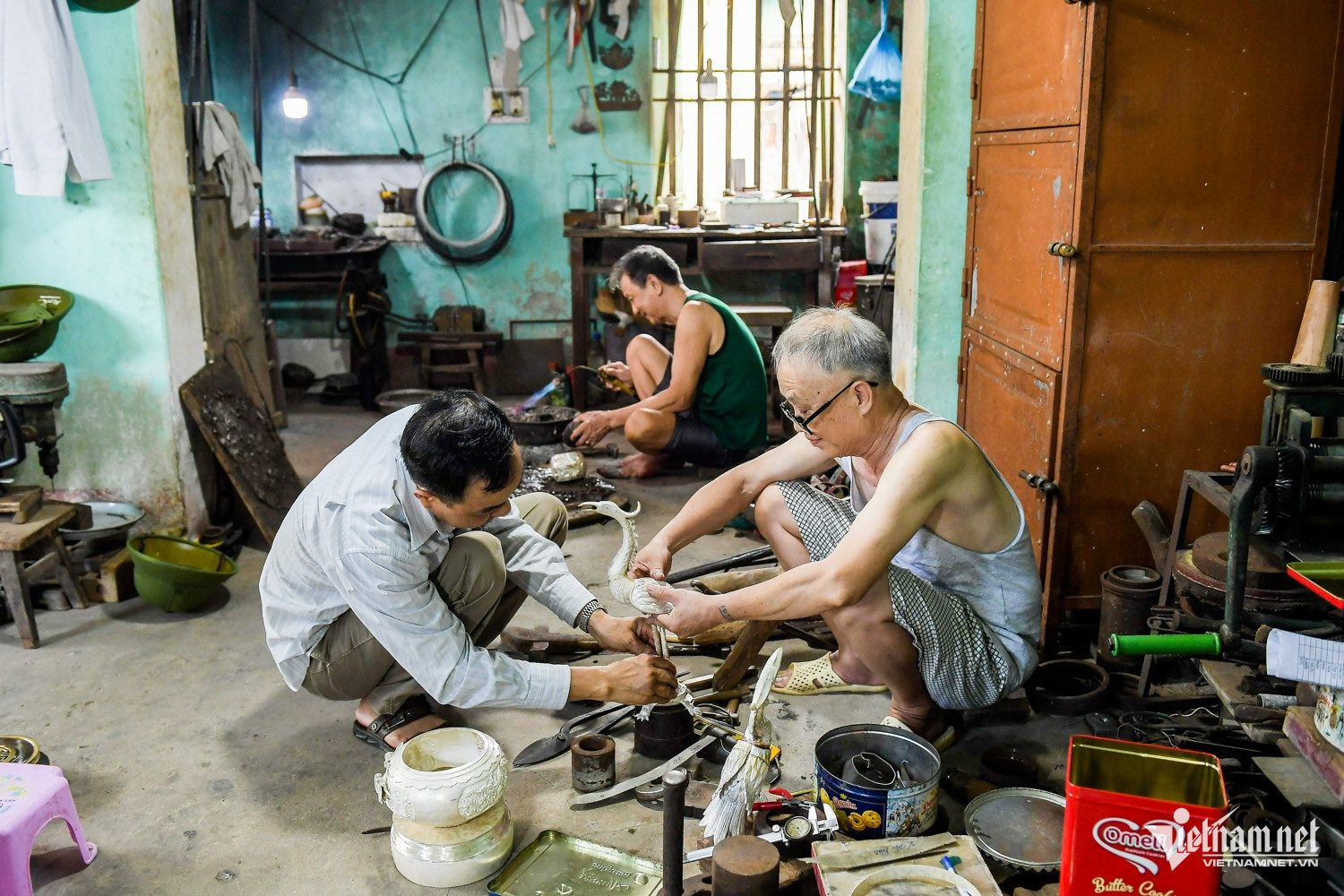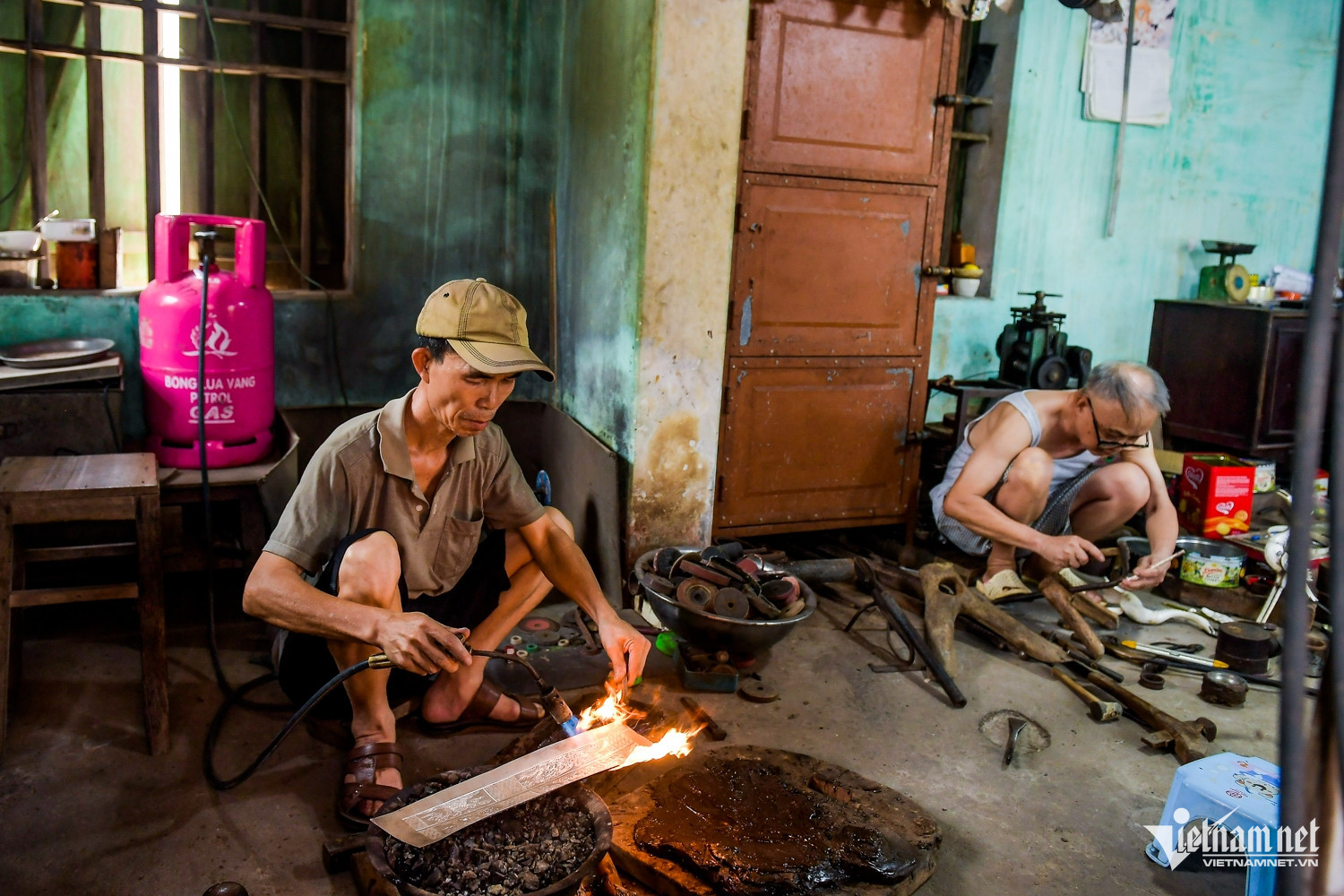Located by the Dong Giang River in Hong Thai commune, Kien Xuong district, Thai Binh province, Dong Xam Silver Craft Village is steeped in nearly 600 years of history. Legend has it that in 1428, Nguyen Kim Lau established a workshop in the area, teaching the villagers the craft of silverwork. Today, the tradition continues to thrive, with the village remaining a symbol of Vietnam's rich cultural heritage.
Resonating tradition
As we arrived in Dong Xam, the first sound that greeted us was the rhythmic clinking of hammers striking metal, echoing throughout the village.
According to experienced artisans, silverwork involves several key techniques: tron (smoothing and polishing), dau (joining components), dau (drawing silver into fine threads for intricate designs), and cham (engraving patterns onto the surface). Among these, cham is the most challenging, as the finished product's beauty and finesse heavily depend on this stage.
Dong Xam is particularly famous for its engraving techniques, which require artisans to possess innate talent, a deep love for the craft, creativity, and a thorough understanding of light and shadow. By expertly utilizing the reflective properties of silver, these artisans create products that are not only lustrous but also imbued with a sense of soul.
This meticulous process demands intense focus and precision, as even the slightest mistake can ruin the entire piece. It is this dedication to perfection, combined with the artisans' skilled craftsmanship, that sets Dong Xam's silver products apart from those produced elsewhere.
Nguyen The Dan, a 68-year-old craftsman from Hong Thai commune with 40 years of experience, shared that creating a single piece requires numerous steps, starting from processing raw materials into sheets, shaping them into desired forms, and finally engraving the intricate patterns.
"The challenge of this craft lies in the fact that each piece is unique, requiring the artisan to envision the entire process from start to finish. Only when the work is completed can we judge whether it was executed correctly," Dan explained.
The most distinctive aspect of Dong Xam's craftsmanship is the raised patterns and designs, all done by hand - no machinery can replicate this level of detail.
In addition to engraving, the dau (joining) process requires extreme precision. "Joining is one of the final steps and demands a steady hand, especially in controlling the flame to avoid melting the silver, which would ruin the piece. It's the most difficult part of silver welding," Dan added.
Learning the craft of silver engraving is no easy feat. It requires patience, dedication, and a passion for the art. However, those who master it often develop a deep love for this traditional craft.
Carrying tradition forward
Like many traditional crafts, Dong Xam's silverwork has experienced periods of great prosperity and times of hardship, with the risk of the craft being lost. However, the exceptional quality of Dong Xam's products has helped the village reclaim its place as a leader in silver craftsmanship.
Trieu Dang Khoa, Chairman of the Dong Xam Silver Craft Village Association, noted that while 70-80% of the villagers once engaged in the craft, only about 40% continue today.
To meet market demand, Dong Xam has expanded beyond traditional silver products, also producing copper engravings and silver-plated items. Regardless of the material, Dong Xam's products are always distinguished by their exquisite, well-balanced designs, each piece carrying the village's unique artistic identity.
"To keep up with modern trends and ensure the survival of our traditional craft, we must find ways to provide stable incomes for the artisans," Khoa explained. "Dong Xam now operates in two main areas: traditional handcrafts, including silver engraving, and modern production of decorative items with technological and mechanical support."
Khoa also mentioned that to cater to customer preferences, Dong Xam's product range has diversified, from worship items to household goods and jewelry. Prices vary depending on the complexity, labor, and materials involved.
Today, Dong Xam's silver products are widely known and cherished, with many orders coming from overseas markets such as Japan and South Korea. This has allowed the village's craftsmanship to extend beyond Vietnam's borders.
"Those of us who have been in the craft for many years hope that this unique tradition will continue to be preserved and promoted," Khoa shared. "The Dong Xam Silver Craft Village Association plans to open classes to teach the craft to younger generations who are passionate about silverwork. This will help pass on the 'fire' to future artisans and ensure the preservation of our traditional heritage."

 |
 |

 |
 |

Trong Tung